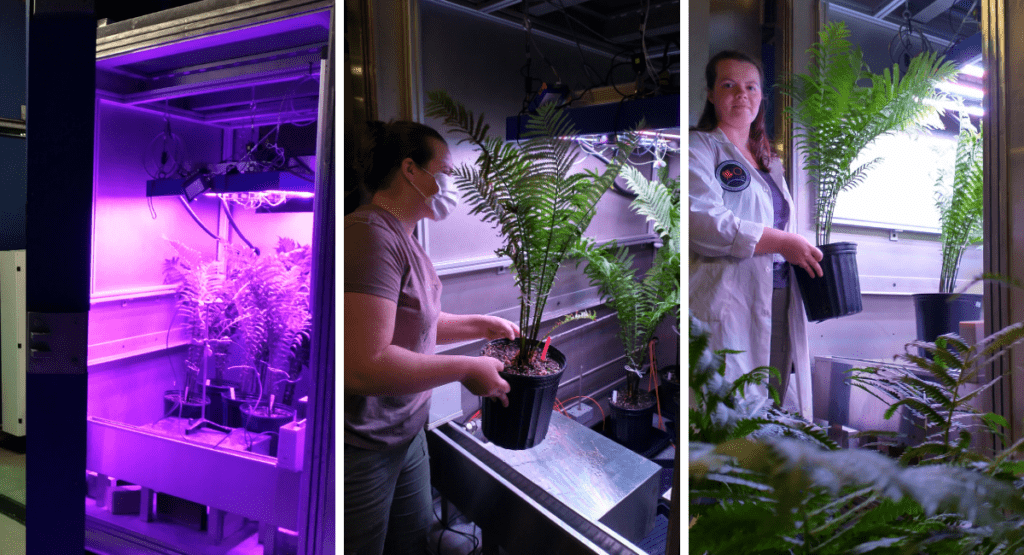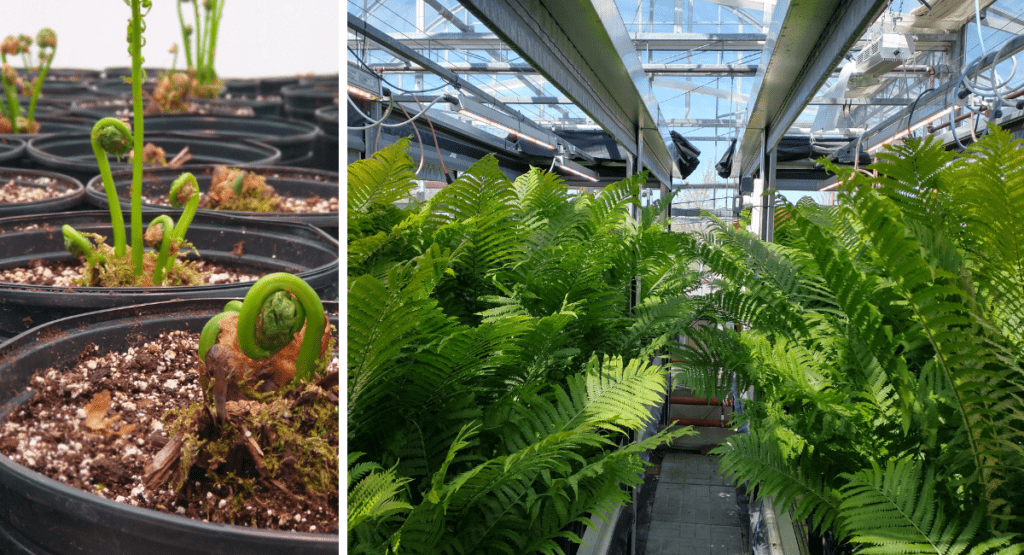Written by: Rosemary Brockett, Knowledge Mobilization Coordinator for Food from Thought at the University of Guelph
Challenge: Determine whether ostrich fern fiddleheads can be produced as a year-round crop in Ontario Solution: Prove the potential for growing ostrich fern fiddleheads in greenhouse environments Impact: Proof of concept supports further research into production protocols

Fiddleheads are a nutritious and delicious spring delicacy in Ontario, but they are only available for a few weeks each year. The young leaves of the ostrich fern (Matteuccia struthiopteris L. Todaro), fiddleheads are harvested from wild populations of ostrich ferns which limits availability, market growth, and research opportunities. To overcome these challenges, the study investigated how to grow fiddleheads in a controlled greenhouse environment.
Supported by funding from the Greenhouse Technology Network (GTN), the researchers at University of Guelph’s Controlled Environment Systems Research Facility (CESRF) focused on identifying the optimal temperature, light, and carbon dioxide conditions for fiddlehead growth by measuring the canopy level net carbon exchange rate in sealed plant growth chambers.
The requirements of the summer recharge and winter dormancy phases of the ostrich fern’s life cycle was also examined to determine whether the growth cycle could be compressed to improve production efficiencies. The summer recharge phase is when the ferns produce large green fronds that photosynthesize and store starch in the roots. The winter dormancy phase is when the ferns lose their fronds and enter a period of low metabolic activity. These phases are triggered by changes in temperature and day length.
The researchers experimented with different durations and conditions for these phases to see how they affected the production and quality of fiddleheads. They measured the frond number and size, the fiddlehead number and diameter, and the frond expansion rate of the ferns under different treatments.

Overall, the results showed that fiddlehead production is possible under standard greenhouse conditions and the finding suggests that there may be potential for compressing the growth cycle substantially by manipulating the winter dormancy phase. This could lead to more availability, diversity, and sustainability of fiddleheads as a local food source in Ontario. Most importantly, the study provides a foundation for future research on other aspects of fiddlehead cultivation, such as water and nutrient management, pest and disease control, and post-harvest handling.
President of NorCliff Farms Inc., Brittany Maranger, found the research results to be very helpful to expand the access for consumers to local fresh vegetables. “As the largest fiddlehead producer in North America, we are excited with the results the researchers uncovered. In light of this new information, we can look forward to a future with greater nutrition and accessibility of the vegetable to our communities. Understanding the summer recharge and winter dormancy phases of the ostrich fern’s life cycle propels our fresh fiddlehead business and arms our company with a potential new avenue and opportunity.”
This project was funded by the Arrell Food Institute through a student scholarship along with NorCliff Farms.
This project was made possible by funding from the Federal Economic Development Agency for Southern Ontario, through the Niagara College-led Greenhouse Technology Network.
Visit University of Guelph’s Controlled Environment Systems Research Facility (CESRF) website to learn more about its resources and capabilities.






